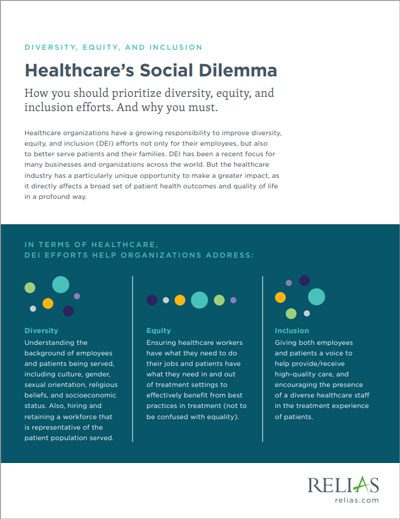New recommendations to help hospitals achieve health equity are part of a report on racial justice and health equity issued by the American Medical Association.
In it, the authors recommended healthcare leaders take steps to ensure “just representation of Black, Indigenous, and Latinx people in medical school admissions as well as medical school and hospital leadership ranks.”
Diversity, equity, inclusion (DEI), and belonging, along with racial, ethnic, and gender inequities, also are addressed in updated guidance from the American Heart Association and American College of Cardiology.
“Boards of directors should make expectations clear to senior management, and should hold executives accountable for achieving specific results,” says William J. Oetgen, MD, MBA, FACC, a clinical professor of medicine at Georgetown University and report co-author.
Health Equity in the Future of Nursing
A third report, from the National Academy of Medicine (NAM), explores how nurses can alleviate health disparities and promote health equity. Many are unaware of how nurses affect health equity, according to Maureen Bisognano, MS, president emerita and senior fellow at the Institute for Healthcare Improvement. “Nurses are well-positioned to create fair and just opportunities for everyone to live their healthiest life,” says Bisognano, report co-author.
Education and leadership development are needed to support nurses in this endeavor. “Promoting diversity, equity, and inclusion, both in nursing education and in the workforce, is critical,” Bisognano says.
How Nursing Schools Can Impact Health Equity
The NAM report authors suggested two necessary changes for nursing schools:
- Nursing curricula should include data on health disparities. In most nursing schools, professors teach social determinants of health and related subjects in stand-alone courses. Bisognano argues this approach will not help nurses address the problem meaningfully. Instead, she suggests integrating the content throughout curricula, supplemented with community-based experiential opportunities.
- Schools should address financial barriers that can prevent people of color, those with low incomes, or first-generation students from pursuing careers or advanced degrees in nursing. Bisognano says administrators should commit to recruiting, hiring, and advancing diverse professionals while eliminating policies that perpetuate discrimination.
For example, Bisognano notes that, historically, nursing curricula leaned heavily toward contributions of only white and women nurses. She believes this unbalanced focus sends a message to students about what faculty consider important. “Moving forward, curricula need to include a critical examination of the history of racism within nursing, and an acknowledgment and celebration of the contribution of nurses of color,” Bisognano and colleagues wrote.
Prioritizing DEI Efforts
By working to bolster DEI efforts, healthcare organizations have a unique opportunity to improve the lives of those providing and receiving care. As DEI is relatively new focus area for healthcare leaders, mistakes are common, and rollouts are often unorganized.
Sometimes, nurse leaders from underrepresented groups are asked to participate in DEI initiatives without compensation. “Employers need to provide adequate space, support, and payment for this work, which can be emotionally taxing,” Bisognano says.
The overarching goal, says Bisognano, is for hospitals to be “embedding equity and antiracism into every aspect of nursing, not treating them as separate from everyday activities and responsibilities.”
This article was originally published by Relias Media.

Healthcare's Social Dilemma: Prioritizing DEI White Paper
Healthcare organizations have a growing responsibility to improve DEI efforts not only for their employees, but also to better serve patients and their families. This white paper outlines concrete steps organizations can take to incorporate DEI into their culture.
DOWNLOAD THE WHITE PAPER →





